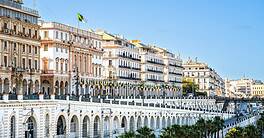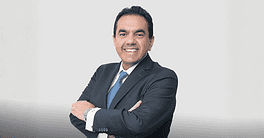ANNUAL SURVEY/ CENTRAL BANKER REPORT CARDS
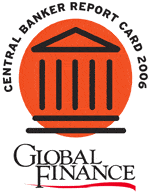 Stagflation is back. Rising prices of oil and other commodities, combined with slowing global economic growth, have created a dilemma for many of the world’s central bankers. Should they raise interest rates to contain inflation or cut them to head off a possible recession? Or should they do nothing?
Stagflation is back. Rising prices of oil and other commodities, combined with slowing global economic growth, have created a dilemma for many of the world’s central bankers. Should they raise interest rates to contain inflation or cut them to head off a possible recession? Or should they do nothing?
Central banking is as much an art as a science. Sometimes it operates on a wing and a prayer, such as when a central bank governor decides that an expected slowing in the economy will curb inflation and, therefore, there is no need to boost interest rates. The science part of central banking is in the ascendancy, however, with formal and informal inflation targeting becoming the norm. Providing a reasonably low and stable price environment is the greatest gift a central banker can give his economy.
Even though most central banks have been raising interest rates, inflation has been rising at the same time. Real rates in many cases are still well below historical norms. Can global liquidity be withdrawn without triggering an emerging market crisis? Is it worth throwing millions of people out of work to shave a half percentage point off the inflation rate?
Central bankers will continue to grapple with these and other questions in the months and years ahead, such as what to do in the case of a currency crisis, and how much to diversify foreign currency reserves.
Every country’s situation is different, of course, and many central bankers have had to deal with unique crises. Stanley Fischer of the Bank of Israel had to calculate the costs of war on his country’s economy. Zhou Xiaochuan has had to deal with international pressure to revalue the yuan at the same time as trying to slow China’s booming economy and clean up the banking system.
The challenges are more complex than ever, but this year’s crop of central bankers has done a good job for the most part. There is plenty of room for improvement, however, and some reason to hope we will get it in the year ahead as the science continues to advance. There are also a few cases where central bankers are obviously on the wrong course.
THE AMERICAS
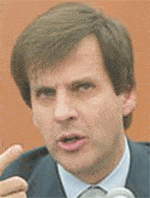
ARGENTINA
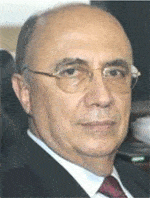
BRAZIL
HENRIQUE DE CAMPOS MEIRELLES
Grade: B+
President Luiz Inácio Lula da Silva is highly favored to win a second four-year term this month, largely because of the strong performance of Brazil’s economy. At least some of the credit for Brazil’s economic success goes to Henrique de Campos Meirelles, the country’s top banker, who has kept inflation under control and who is now in the enviable position of being able to lower interest rates. A projected inflation rate of 3.75% for 2006 would be the lowest annual inflation rate the country has seen since 1999, comfortably below the central bank’s target of 4.5%. Banco Central’s biggest problem is trying to keep the real from appreciating too much. Nonetheless, the country’s trade surplus widened to a record in July, thanks to higher commodity export prices and strong global demand. And while Brazil’s economy remains susceptible to damage from external events, such as higher global interest rates and a deceleration in global economic growth, the decline in its foreign debt has made it less vulnerable to the vagaries of foreign investors. This year’s expected GDP growth of about 3.6% will be less than an earlier government forecast of 4.5%, but it will be well above the 2.3% expansion of 2005.
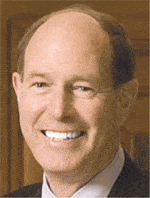
CANADA
DAVID DODGE
Grade: C
The Bank of Canada raised interest rates seven consecutive times since last fall before pausing at 4.25% in July, beating the Federal Reserve to the pause button and hinting that it thinks the economy could weaken if there is a slowdown in the US economy. Bank governor David Dodge is also worried about the effects of the strong Canadian dollar on the country’s manufacturers and exporters and believes strong economic data are not reason enough to raise rates. Although the Canadian economy is operating at full capacity and inflation is rising faster than expected, Dodge believes inflation can be controlled by external forces. He appears to be going soft on inflation at a time when the western provinces are booming and there are many uncertainties about the long-term effects of higher energy prices feeding through to core inflation. The central bank’s pause in July caused the Canadian dollar to weaken, to the cheers of the country’s exporters, but added to the risk Dodge is taking on inflation. The jobless rate fell to a 32-year low of 6.1% in May, showing the labor market to be stronger than most people thought.
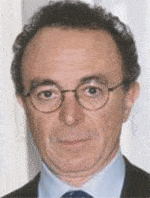
VITTORIO CORBO
Grade: A-
Slower economic growth and higher oil prices have complicated the task of Vittorio Corbo. The economy remains relatively strong, however, boosted by a still-high price of copper, despite some recent pullbacks. The central bank pushed the interest rate up by a quarter point to 5.25% in July and said additional increases could be expected, although they may be less frequent than they have been in recent quarters. Chile’s year-over-year consumer price inflation rose to 3.9% in June, due to high oil prices, but core inflation fell to 3.1% in June from 3.3% in May, comfortably within the central bank’s 2%-to-4% target band. While the economy has hit a soft patch, salaried employment continues to increase vigorously and domestic financial conditions are still expansionary, according to the central bank. Corbo has kept a steady hand on monetary policy and deserves credit for keeping inflation under control. He already has warned that he will tighten policy more aggressively if fiscal policy is eased in 2007.
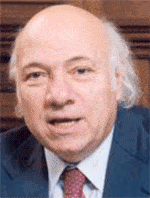
GUILLERMO ORTIZ MARTINEZ
Grade: B+
Mexico’s economy is growing at its fastest rate in six years while inflation remains under control, thanks in large part to the responsible policies of the country’s top banker. The central bank held the benchmark lending rate at a two-year low of 7% in July while the country held its collective breath as it waited for Mexico’s electoral court to ratify the winner in the July 2 presidential election. The country’s strong economic fundamentals, including high oil revenues and a steady inflow of foreign direct investment, should see it through the political uncertainty. The closeness of the presidential race, however, suggests that the presumed winner, Felipe Calderón of the conservative National Action Party, or PAN, will have a difficult time getting the structural reforms passed that are needed to keep Mexico’s economy competitive in the long run. And while Nafta has brought many benefits, the tighter integration of the Mexican and US economies puts Mexico at risk to an expected slowdown in the economy of its main trading partner.
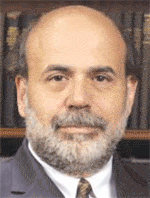
UNITED STATES
BEN S. BERNANKE
Grade: C
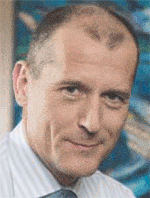
ZDENEK TUMA
Grade: B-
The Czech koruna has been the strongest currency in Central and Eastern Europe so far this year, and the country’s exporters are complaining loudly. While Zdenek Tuma has kept the country’s interest rates below those of the European Central Bank, he has not taken direct action to keep the koruna from rising. Now that the current account appears set to move into deficit, the koruna could begin to pull back from its highs. The central bank raised interest rates from 2% to 2.25% in July, and price pressures remain a concern, with inflation of 2.8% in June pushing above the preferred 2.5% level. Tuma has shown no inclination, however, to raise interest rates to the level of the ECB, even if the koruna weakens in the months ahead. The Czech government aims to join the European monetary union by 2010, and the central bank eventually will need to eliminate the negative interest rate differential with the eurozone. Continued ECB tightening will make that task more difficult.
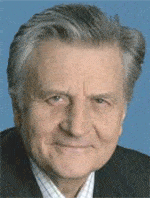
JEAN-CLAUDE TRICHET
Grade: C
The European Central Bank raised its key interest rate by a quarter point to 3% in August, its fourth increase in eight months. With inflation rising above the bank’s 2% target, Jean-Claude Trichet has made it clear that the ECB will need to continue its tightening efforts at future meetings. He says that monetary policy remains accommodative and that the level of accommodation will need to be reduced over time. While economic confidence in the 12 eurozone countries is rising and unemployment fell to 7.8% in June, there is a danger of the central bank being too vigilant about inflation. The higher interest rates could boost the euro and hurt exporters at a time when the US economy is showing signs of entering a slowdown. Trichet’s ECB could be well advised to keep some accommodation in place at a time when the global economy is slowing. And although Europe has committed itself to structural reforms to stimulate growth, they have been slow in coming.
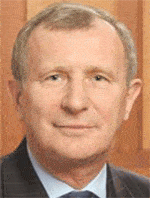
ZSIGMOND JÁRAI
Grade: D
There he goes again! Central bank president Zsigmond Járai seems to enjoy playing a game of cat and mouse with the forint. As we have reported here for the past two years, Járai has seemingly targeted the level of the currency as the key determinant of monetary policy. With the forint weakening to record lows against the euro, the Magyar Nemzeti Bank, as the central bank is known, raised interest rates by a half point to 6.75% in July. At a time when most central European central banks are struggling to restrain strong currencies, Járai has the opposite problem. Large deficits on the country’s current and fiscal accounts have battered the forint at a time when low interest rates are needed to stimulate economic growth. Járai says euro adoption may be delayed beyond 2013 due to the government’s budget deficit, which is three times the limit for joining the euro. With interest rates rising along with value-added taxes, Hungary’s already low GDP growth rate of 4.4% estimated for 2006 is likely to be cut in half next year.
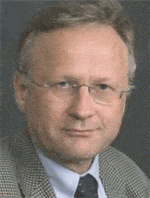
SVEIN GJEDREM
Grade: A
If you want to be a central banker, pick a country like Norway, with steady growth and low inflation. Svein Gjedrem’s job hasn’t been overly challenging in recent years, but he has done it well. Monetary policy in Norway is geared toward low and stable inflation. This is the most important contribution that monetary policy can make to ensure a sound economy in the long run, Gjedrem says. The government’s sensible fiscal rule provides for a phasing in of rising oil revenues. Combined with a 2.5% inflation target, expectations regarding the exchange rate and inflation are fairly steady. With the unemployment rate of 2.7% likely to fall to 2.4% next year, however, there are risks of bumping up against capacity constraints. There are prospects that the interest rate will be raised in small, not too frequent steps toward a more normal level, Gjedrem says. The central bank’s transparency in explaining how it sets policy contributes to keeping the economy on an even keel.
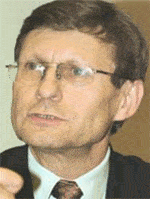
LESZEK BALCEROWICZ
Grade: B
Leszek Balcerowicz, the architect of Poland’s successful economic “shock therapy” in the early 1990s, has returned to his old form in the past 12 months. The Polish economy is enjoying a mix of higher growth and low inflation. The Monetary Policy Council, or MPC, held the key reference rate at an all-time low of 4% at its meeting in late July. Economic growth is expected to be about 5% this year, up from 3.2% in 2005, while the unemployment rate inched down to 15.7% in July from 18% in the same month a year earlier. Despite the country’s uncertain political environment, the economy is being supported by gains in foreign direct investment and exports. Meanwhile, the low level of all core inflation indexes indicates that inflationary pressure remains contained, according to the MPC. It says that implementing an economic strategy focused on creating conditions that ensure the introduction of the euro at the earliest possible date would be most favorable for Poland and would contribute to higher long-term economic growth.
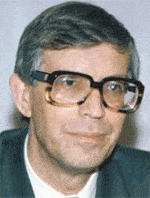
SERGEI M. IGNATYEV
Grade: C
This time last year, things were looking fairly bleak for Russia’s central banker, Sergei Ignatyev. The country’s growth spurt seemed to be coming to an end and inflation had almost doubled from 2004’s 3.5%. So grim were some predictions, in fact, that the word on many people’s lips was the dreaded “stagflation.” What a difference a year makes: According to the International Monetary Fund, the Russian central bank has succeeded in setting inflation on a renewed downward path, reversing the past two to three years’ entrenched inflation. Real GDP growth is gaining momentum again and is expected to reach 6.5% for 2006. The lifting of capital-account restrictions in July could lead to additional pressure on the ruble to appreciate. So far, the central bank has absorbed a large part of the foreign currency inflows by intervening in the market. The IMF says the ruble should be allowed to appreciate in line with economic growth, and with continued exchange-rate flexibility the somewhat unambitious year-end inflation target of 8.5% is within reach. Meanwhile, high oil prices are boosting the country’s foreign currency reserves, which are expected to reach $300 billion by the end of this year. The government has been spending more of its oil revenues, and the relaxed fiscal policy is adding to the test facing Ignatyev on the inflation front. External debt is declining, however, and the government has agreed to pre-pay all of its outstanding Paris Club debt.
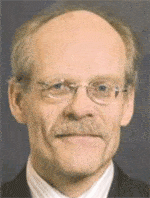
SWEDEN
Stefan Ingves, head of the Riksbank, has surprised many observers by raising interest rates at a time when inflation remains slightly below target and there is still spare capacity in the labor market. Ingves’s reasoning is that Sweden has yet to see the full effect of the expansionary monetary policy of the past few years, and monetary policy will need to be less expansionary in the future. The former director of the monetary and financial systems department of the International Monetary Fund succeeded Lars Heikensten as Riksbank governor in January. Ingves raised interest rates three times in the first half of 2006 and has promised more rate rises to come, prompting some concern that he is acting tough in response to suggestions that he would be more compliant with government wishes. He says rate decisions must be based on an assessment of how the economy will look a few years down the road. If he keeps cranking up the rates, it might not look so rosy by then.
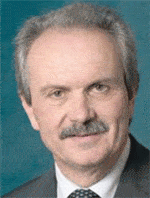
SWITZERLAND
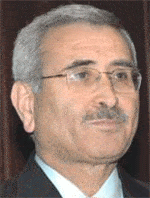
TURKEY
DURMUS YILMAZ
Grade: B-
Durmus Yilmaz was appointed governor of the central bank in April, a month in which the inflation rate jumped to near 10%, dashing hopes of meeting the year-end 2006 inflation target of 5% under an International Monetary Fund-sponsored economic program. The surge in inflation triggered a sharp slide in the lira, presenting Yilmaz, a British-educated economist, with a financial crisis and market turmoil as soon as he walked into his new office. Concern about a widening current account deficit and weakness in emerging markets triggered a flight of capital from Turkey. In June, after billions of dollars of foreign exchange market intervention failed to halt the lira’s decline, the central bank raised interest rates by 175 basis points to 15%, marking its first increase in rates in five years. A further series of rate rises brought the overnight borrowing rate to 17.5% in July, as the rise in inflation continued. The central bank said it would continue its cautious stance because oil and other commodity prices were still increasing. The bank also introduced daily foreign exchange auctions to help stabilize the currency. Yilmaz could have acted more quickly, but he took decisive action eventually.
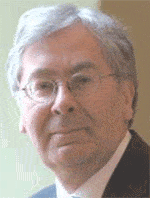 UNITED KINGDOM
UNITED KINGDOMMERVYN KING
Grade: B-
In a move that caught the financial markets by surprise, the Bank of England increased interest rates by a quarter of a percentage point in August to 4.75% in an effort to keep inflation under control. Inflation had jumped to 2.5% in June, rising resolutely above the government’s longstanding 2% target. The British economy enjoyed its strongest growth in two years in the second quarter, with a 0.8% increase, bringing the annual GDP growth rate up to 2.6%. After enduring a two-year period of low growth, the housing market has also recovered considerably in the past 12 months. With energy prices remaining high, Mervyn King decided that the time was ripe for precautionary action on rates after nearly a year without a change. While King was criticized for not waiting for more-definitive signs on inflation, he could be removing the need for bigger rate increases later. His decision is complicated, however, by the fact that the UK unemployment rate hit its highest level in six years at 5.4% in the second quarter. The lack of pressure in the jobs market could help to keep prices in line and effectively mean the interest rate rise was, in fact, premature.
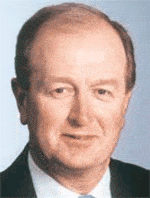
AUSTRALIA
GLENN STEVENS
Grade: TOO EARLY TO SAY
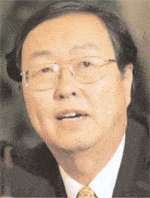
CHINA
Grade: C+
Zhou Xiaochuan continues to tap lightly on the monetary brakes, but so far he hasn’t been able to get the Chinese economy to slow down. The GDP growth rate in the second quarter was a red-hot 11.3%. Investment in factories and other fixed assets is growing at an annual rate of more than 30%. The country’s record trade surplus is adding about $20 billion a month to foreign currency reserves, which likely will reach $1 trillion by the end of 2006. The People’s Bank of China, the central bank, raised interest rates for the first time in 18 months in April, boosting the one-year lending rate to 5.85% from 5.58%. Further rate increases are expected. Meanwhile, the PBOC has increased bank reserve requirements twice this year, hoping to slow the speedy expansion of money and credit. While Zhou expects economic growth to slow slightly in the second half of 2006, he may need to use the full range of policy tools at his disposal to achieve a slowdown. This could include a more flexible currency regime and a marked appreciation of the yuan. Otherwise, the economy could spin out of control.
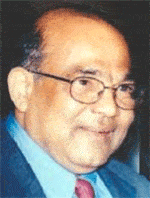
INDIA
YAGA VENUGOPAL REDDY
Grade: B+
India’s central bank raised its benchmark rate for the third time this year in late June, extending a monetary tightening cycle that began in October 2004. The bank raised its reverse repo rate by a quarter point to a four-year high of 6%. More increases may be needed to keep inflation from rising above the central bank’s 5%-to-5.5% target range for the fiscal year ending March 31, 2007. So far, Yaga Venugopal Reddy has had some success in keeping the economy growing at a rate of close to 8% annually while keeping inflation under control. Reddy warns, however, that credit growth cannot be maintained at the current rate of around 30%. Strong domestic demand and oil price increases could cause the trade deficit to widen sharply in the second half of 2006. The Indian rupee has declined by nearly 4% against the dollar this year, but Reddy’s tight monetary policy should keep it from weakening much further.
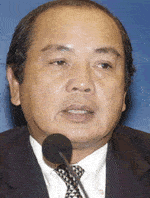
INDONESIA
BURHANUDDIN ABDULLAH
Grade: B
Bank Indonesia cut interest rates by a half percentage point to 11.75% in August, following quarter-point reductions in May and July. The Indonesian economy has responded favorably to Burhanuddin Abdullah’s tight-money policy of last year, which belatedly followed a rupiah crisis. Inflation is now on a rapidly declining path, the rupiah is appreciating modestly, and the country’s credit rating has been upgraded. Consumer price inflation for the first seven months of 2006 was 3.3%. On a year-over-year basis, the CPI increase was just over 15%. With inflation heading rapidly lower, more rate cuts are likely. Meanwhile, Indonesia’s oil-based exports are climbing sharply, and international reserves rose to about $42 billion in August. Short-term capital inflows totaled $1.1 billion in July. The central bank says inflation is predicted to remain on track to meet the 8% target for 2006 and 6% for 2007. It needs to be careful, however, that the rupiah doesn’t drift lower as monetary policy is eased.
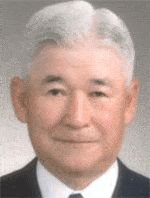
JAPAN
TOSHIHIKO FUKUI
Grade: C-
Toshihiko Fukui may have moved sooner than he needed to in ending the country’s zero-interest-rate policy. While the Japanese economy appears to be recovering modestly, the threat of serious inflation simply does not exist. The GDP growth rate could reach 3% for 2006 but is expected to slip below 2% next year. This reflects not only expected slower global growth but also the lagged effects of the central bank’s massive withdrawal of reserves from the banking system. The Bank of Japan raised interest rates in July for the first time in six years, boosting the overnight call rate to 0.25% from effectively zero. Fukui acknowledged in June that he had invested in a fund run by a well-known shareholder activist, Yoshiaki Murakami, who was arrested on charges of insider trading. Fukui denied any wrongdoing and said he would not step down. “I caused a fuss and worried many people, but I still have a duty to fulfill,” he said.
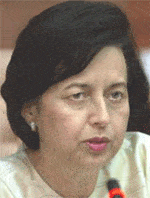
MALAYSIA
ZETI AKHTAK AZIZ
Grade: A
Zeti Akhtak Aziz in November 2005 raised interest rates for the first time since the 1997-1998 Asian financial crisis. Further increases followed in February and April 2006, as Bank Negara Malaysia acted to counter rising inflation after the government raised fuel prices to cut its subsidy bill. The country’s inflation has eased after reaching a seven-year high in March and is expected to trend lower for the rest of this year. Slowing overseas demand for the country’s electronics exports may cause GDP growth to miss the central bank’s forecast of a 6% expansion this year. Bank Negara kept its key interest rate unchanged for a second straight meeting in July, amid slowing export growth and easing inflation. The ringgit remains strong as Malaysia continues to enjoy a large current-account surplus. While domestic conditions remain favorable, the central bank says, uncertainties have emerged in the external environment arising from sustained high energy prices, geopolitical risks and possible moderation of global growth.
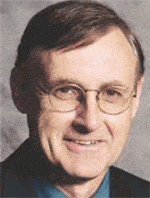
NEW ZEALAND
ALAN BOLLARD
Grade: B
What does a central banker do when faced with a weak economy and above-target inflation at the same time? If he is Alan Bollard, he sensibly sits tight. Weaker economic activity will reduce medium-term inflation pressures. Bollard, therefore, has decided not to tighten policy in response to high headline inflation in the short term. At the same time, he says the central bank cannot afford to ease policy until it is certain that future inflation will trend below the 3% ceiling of the bank’s 1%-to-3% inflation target range. New Zealand already has some of the highest interest rates in the developed world, with the official cash rate at 7.25%. While the sharp decline in the New Zealand dollar earlier this year will lead to higher prices on imported goods, and while oil prices have risen and seem likely to stay high, Bollard sees no benefit in driving the economy into recession. At the same time, he sees no scope for easing, given the current situation.
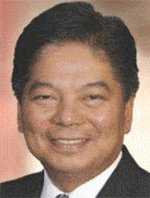
PHILIPPINES
ARMANDO M. TETANGCO JR.
Grade: A-
Inflation in the Philippines is abating, and the economic outlook is improving. The consumer price index in July rose 6.4% year over year, the smallest increase in two years. Armando Tetangco says the central bank’s forecasts continue to show a decelerating path for inflation. With the country’s political situation remaining uncertain, economists have been surprised at the strength of the peso. Exports in June were up more than 20% from the same period a year earlier, boosting foreign exchange earnings. Meanwhile, foreign flows into peso-denominated assets are rising, as are remittances from overseas workers. The central bank has kept interest rates on hold since October 2005, while the government has done its part to improve tax collections and the country’s debt ratios. Tetangco says the central bank will remain vigilant against inflation, particularly with oil prices rising, and that it stands ready to act if there is evidence of escalating risks to the outlook for inflation.
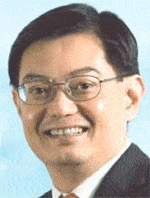
SINGAPORE
HENG SWEE KEAT
Grade: B+
Singapore’s monetary policy focuses on the management of the exchange rate. The Monetary Authority of Singapore aims to keep the Singapore dollar within an undisclosed band against a trade-weighted basket of currencies and has had a policy of allowing a modest and gradual appreciation of its currency since 2004. Heng Swee Keat, MAS managing director, says growth and inflation prospects argue against any change in the band. Singapore interest rates have been on a rising trend since late last year, reflecting the rising currency against a backdrop of a strong economy. GDP expanded by 9% year over year in the first half of 2006, although an expected slowdown in the US economy could dampen Singapore’s exports in the second half. Heng says improving conditions in Europe and Japan, as well as continued strong expansion in China and India, will bolster overall external demand.
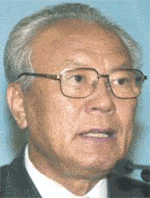
SOUTH KOREA
SEONG-TAE LEE
Grade: D
Growth in the South Korean economy is slowing, and yet the central bank is still raising interest rates. The Bank of Korea surprised the market by raising the overnight call rate in August by a quarter point to 4.5%. The bank has raised lending rates five times since last October, although inflation remains at the lower end of its 2.5%-to-3.5% target range. Perhaps because the country is such a large importer of oil, Seong-Tae Lee is worried about the effects of higher oil and other commodity prices on inflation. He seems to be ignoring a slowdown in both exports and domestic demand. While GDP is now growing at a rate of more than 5% from a year ago, a slowdown led by consumer spending could cause growth to decelerate to about 3.5% by year-end. Leading indicators point to weaker growth next year, making it likely that the central bank will have to reverse course.
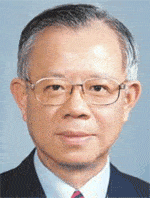
TAIWAN
FAI-NAN PERNG
Grade: A
Fai-nan Perng’s policy of raising interest rates gradually in one-eighth-point increments has been successful in keeping inflation under control without choking economic growth. The broadest measure of inflation, the GDP deflator, has declined in six of the past seven years. The annual rate of growth in Taiwan’s GDP is expected to rise to 4.5% this year from 4.1% in 2005, while inflation is under control. Consumer price inflation was 2.3% last year and will likely fall below 2% this year. Core inflation in the first half of 2006 averaged 0.58%. The current account remains in steady surplus, and foreign exchange reserves are rising. Reserves totaled $260 billion as of July 31, 2006. Growth in the economy is expected to slow slightly in 2007, particularly if there is a slowdown in the US, which is a major importer of Taiwanese electronics and computer monitors.

THAILAND
PRIDIYATHORN DEVAKULA
Grade: C
Thailand’s central bank is counting on slower growth to counter inflationary pressures. Pridiyathorn Devakula stopped raising rates in July for the first time in 10 meetings. The Bank of Thailand lowered its GDP growth outlook in July to the 4% to 5% range. Pridiyathorn said the rate of inflation would probably stall in the second half of 2006 after consumer prices rose at their slowest pace in a year in July. In addition to high energy prices and slower export growth, the political crisis and ongoing uncertainty have contributed to slower growth in the economy. Pridiyathorn has made it clear that the central bank will limit gains in the Thai baht to protect the economy. He hopes that he won’t have to raise rates again for the rest of the year, but economists say this will depend to some extent on oil prices.
AFRICA & THE MIDDLE EAST
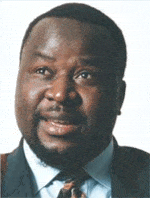
SOUTH AFRICA
TITO MBOWENI
Grade: A
Tito Mboweni has moved decisively this year to counter increased risks to the inflation outlook. In early June, when disruptions to emerging markets in general, as well as declining commodity markets, put downward pressure on the rand, the Reserve Bank of South Africa raised its repo rate by a half point to 7.5%. With food-price inflation adding to price pressures from persistently high oil prices, the bank raised the repo rate another half point in early August to 8%. Mboweni acted even though developments appeared to suggest that some calm was returning to the international financial markets, as evidenced by narrowing spreads on emerging-market debt. The central bank says it will always remain vigilant in order to ensure that the consumer price index stays within its 3%-to-6% target range. Inflation targeting has served the country well, and Mboweni is right to act quickly to counter any deterioration in the inflation outlook.
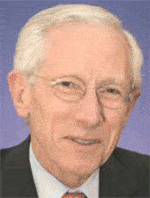
ISRAEL
STANLEY FISCHER
Grade: B
The Israeli central bank made adjustments for the war with Hezbollah by raising its benchmark lending rate by a quarter point on July 24 to 5.5%. Stanley Fischer, the former vice chairman of Citigroup who was appointed governor of the central bank in May 2005, says he acted to counter any inflationary effects from a decline in the shekel. According to the minutes of the Bank of Israel’s July 23, 2006, policy meeting, the long-term possible damage of the fighting on private-sector demand will create a moderating force on price rises. However, in the short term, the effect will be to raise prices, given the more immediate impact on supply. Prior to the outbreak of fighting, the Israeli economy was growing at an annual rate of about 6%, but the war is expected to reduce the growth rate by about one percentage point this year, primarily due to a decline in tourism. Inflation was running just above the bank’s 1% to 3% target in July, due to fast growth in the economy and rising import prices.

